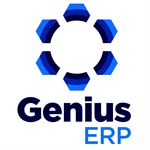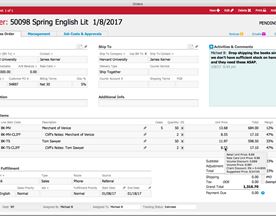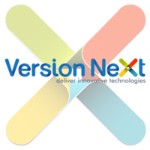Enterprise resource planning (ERP) software helps businesses manage day-to-day business activities such as accounting, procurement, project management, risk management and compliance, financial planning, and supply chain business operations. In this comprehensive guide, we will provide an overview of ERP systems, their key features and benefits, look at popular ERP vendors and solutions, discuss ERP implementation challenges, and provide a real-world example of a company using ERP software.

An enterprise resource planning (ERP) system is a software platform that integrates various business processes and functions into a single system. ERP systems consolidate all departments and functions across a company into a uniform and one enterprise resource planning systems go-wide system that can be accessed by all employees.
What is an Example of ERP System? Examples include SAP, Oracle, and Microsoft Dynamics. These systems integrate various business processes like accounting, HR, and inventory management, offering a unified platform for improved efficiency and data analysis.
Some key things to know about ERP systems:
- ERP systems integrate various back-office functions such as accounting, HR, procurement, project management, inventory and product planning, sales, CRM (customer relationship management), and more. This eliminates silos and provides collaboration across teams and departments.
- ERP systems and accounting software are different, but most ERP software comes with accounting features.
- They provide a centralized database that collects, stores, manages, and interprets data from across the business. This provides visibility into the organization and enables data-driven decision making.
- ERP platforms help automate processes and workflows, increasing efficiency. Manual tasks can be reduced or eliminated.
- Real-time information and reporting can be accessed as the centralized database is continually updated as transactions occur.
- Popular ERP vendors include SAP, Oracle, Microsoft Dynamics 365, Infor and more.
In summary, ERP systems connect the different elements of a more streamline business processes into an integrated system for process automation, data visibility and analytical insights.
Key things to know about ERP systems:
- Integrates various back-office functions
- Provides centralized data and visibility
- Automates processes and workflows
- Enables real-time reporting
- Leading vendors include SAP, Oracle, Microsoft Dynamics 365

Benefits of ERP Software
There are many important benefits that a company can realize to reduce costs, from implementing a cloud based or non-cloud based ERP system:
1. Improved Efficiency and Productivity
ERP software eliminates duplicative efforts and automates workflows across departments. This streamlines operations, reduces costs associated with manual processes, and boosts overall productivity. Employees also gain more time to focus on value-added tasks.
2. Enhanced Reporting and Analytics
The unified database creates a “single source of truth” that enables real-time financial reporting, and advanced analytics. Having clear visibility supports better and faster decision making at all levels of the business.
3. Standardized and Optimized Processes
ERP systems incorporate industry best practices that help optimize processes company-wide. They eliminate inconsistencies from outdated legacy systems and ensure standardized execution.
4. Better Collaboration Between Departments
Silos are removed as data and workflows connect all departments across the enterprise. This fosters improved communication, transparency, and collaboration within the organization.
5. Scalability for Growth
As a business grows, an ERP solution can scale alongside expanding operations and enter new markets with ease while maintaining uniformity in processes. This ensures a foundation for sustaining growth.
In summary, key ERP benefits cover improved productivity, analytics, optimized processes, collaboration and scalability. The system becomes the digital backbone to efficiently run all core business functions for data-driven decision making.
Key ERP benefits:
- Increased efficiency and productivity
- Advanced reporting and analytics
- Process optimization
- Enhanced collaboration
- Foundation for growth

Examples of ERP Systems
There are a variety of cloud based ERP systems and solutions available from vendors that specialize in different industries and organization sizes and there are several ERP system examples that can streamline operations for manufacturing, accounting, marketing and more. Here are some top ERP platforms and providers:
SAP
As a market leader, SAP offers feature-rich ERP systems for enterprise-level businesses across industries:
- SAP S/4HANA – SAP’s latest generation of ERP targeted to large enterprises. It uses in-memory computing for real-time data processing.
- SAP Business ByDesign – Cloud ERP solution designed for fast-growing midsize companies.
- SAP Business One – Application designed for small businesses to manage entire operations. Integrates all core processes from accounting and finance to inventory, customer relationship management CRM and more.
Oracle
Another dominant player in the ERP market, Oracle solutions span front and back-office operations:
- Oracle E-Business Suite– On-premise integrated ERP platform incorporating supply chain management, accounting, manufacturing, HR and more.
- Oracle NetSuite– Popular cloud ERP suite aimed at fast-growing midsize organizations. Delivers strong financial management and omnichannel commerce solution.
- Oracle JD Edwards– ERP software that focuses on manufacturing, distribution and asset management functions.
Microsoft Dynamics 365
From global enterprises to small startups, Microsoft Dynamics 365 empowers businesses to accelerate growth through integrated cloud ERP solutions for specific functional areas:
- Microsoft Dynamics 365 Finance and Supply Chain Management– Financial management, supply chain and manufacturing capabilities.
- Microsoft Dynamics 365 Commerce– Comprehensive ecommerce and POS solution to run omnichannel sales.
- Microsoft Dynamics 365 Project Operations– Connect sales, resourcing, project management and finance teams within a single platform to win more deals and drive project delivery.
There are many other options from vendors like Infor, Workday, Sage, Epicor and more that serve a range of organizational needs. When evaluating ERP solutions, it’s important to consider factors like industry focus, implementation methodology, total cost of ownership, flexibility and extensibility.
Examples of leading ERP platforms:
- SAP S/4HANA, Business ByDesign and Business One
- Oracle E-Business Suite, NetSuite and JD Edwards
- Microsoft Dynamics 365 suite of ERP products

ERP Implementation Challenges
While ERP systems deliver immense value, the implementation process brings its own set of challenges:
User Adoption
The success of an ERP implementation depends heavily on user adoption across the organization. Employees may resist changes to existing workflows and processes. Ongoing training and change management is crucial.
Customization
Over customization of ERP software can increase costs and undermine the best practices built into most systems. But standardized processes may not meet all unique needs either. Striking the right balance is key.
Data Migration
For existing companies, migrating all legacy and historical financial data into a new centralized system is complex, time-consuming and risky. A sound data migration strategy with appropriate validations is important.
Extensive testing of migrated data, interfaces, reports and workflows is vital to ensure seamless operations, security and compliance. Sufficient testing time should be provisioned.
Legacy Systems
Integrating modern ERP platforms with inflexible legacy systems can pose interoperability challenges and risks. Retiring legacy platforms should be considered where possible.
While ERP projects demand large investments of time and money, payoffs in operational efficiency, data-driven decisions and future innovation outweigh the costs and risks involved.
Common ERP implementation challenges:
- Driving user adoption of new systems
- Finding the right balance of customization
- Migrating legacy data securely
- Conducting adequate testing
- Integrating old legacy platforms

Real-World ERP Example: Cummins Inc.
Cummins Inc. is an excellent example of a global manufacturing giant deriving enormous value from a company-wide ERP implementation.
Company Background
Founded in 1919 and headquartered in Indiana, Cummins Inc. is a Fortune 200 corporation that designs, manufactures, distributes and services diesel and natural gas engines and powertrain-related components. Cummins sells to its customers via standalone distributorships and wholly-owned distributors.
Business Challenges
Rapid global expansion, along with a reactive culture and disjointed operations due to technology limitations, impaired Cummins’ growth. Key challenges stemmed from:
- 17 separate legacy systems and over 2000 applications
- Disconnected finance, manufacturing, inventory and sales data
- Limited visibility into operations
- Manual reporting and planning processes
- Rising IT costs
These technology and process gaps resulted in inefficient use of human resources and capital assets, inventory write-offs and missed revenue targets. Transformational change was needed to align operations, enable fact-based decisions and pursue aggressive growth strategies across business units.
ERP Implementation
To create an integrated operating foundation that meets business objectives, Cummins chose to standardize on a single global enterprise platform – SAP S/4HANA across all business units and entities.
The project rollout followed a “lift and shift” strategy to:
- Harmonize and simplify processes
- Eliminate custom legacy systems where possible
- Minimize modifications to SAP S/4HANA
This allowed rapid deployment with over 170 country-based deployments over just 24 months.
Business Impact
The SAP implementation delivered immense value across all business functions:
Operations
- Cut reporting time from days to hours
- Optimized production planning and asset utilization
- Enabled predictive inventory management
Finance
- Automated complex multi-GAAP financial statements
- Standardized month-end close processes
Sales and Planning
- Real-time order and delivery tracking
- Accurate demand forecasting and supply alignment
Corporate Functions
- Advanced analytics for strategic modeling
- Comprehensive audit traceability and compliance
Overall Cummins gained an agile foundation to enable data-driven decisions and scale innovation for meeting dynamic customer needs worldwide.
This real-world example demonstrates the transformative impact of standardizing global operations under a single unified ERP platform like SAP S/4HANA.
Cummins Inc’s ERP implementation with SAP S/4HANA delivered gains across operations, finance, sales and corporate functions – establishing an integrated foundation for innovation and growth.

Frequently Asked Questions
What are some key things to look for when selecting an ERP system?
Some key evaluation criteria for ERP software include:
- Industry specialization
- Implementation methodology and support
- Scope of functional capabilities
- Flexibility, integration and extensibility
- Cloud vs on-premise deployment models
- Vendor stability and vision
- Costs – both upfront and ongoing TCO
Should every company implement an ERP system?
Most medium to large organizations can benefit greatly from the process optimization and data centralization ERP systems provide. But startups and smaller firms may not yet need such an extensive solution. The decision depends on your growth stage, complexity of operations and budget.
How long does an ERP implementation take?
ERP rollout timelines vary greatly by the solution’s scope and breadth, amount of customization, data migration needs, training and change management involved. Typical implementations range from 6 months for a basic cloud-based system to multi-year phased deployments for global enterprise platforms.
Can ERP software help companies adapt better to economic uncertainty and disruption?
Yes definitely. ERP systems promote operational resiliency by breaking down silos across sales, finance, inventory and production planning. Supply and demand signals can be quickly incorporated to re-align investments to changing business conditions. Leaders gain better analytical insights to model different scenarios.
What are the typical costs involved for ERP implementations?
Costs vary widely based on the vendor, modules deployed, customization, infrastructure needs, training and support. Upfront software licensing can range from $100K to $500K+ for larger enterprise platforms. Some cloud solutions charge monthly subscription fees. Implementation and consulting fees are additional – often as much or more than the software itself. Overall budget 2-4% of revenue.
Should companies hire external consultants for ERP rollouts?
Yes, most firms lack the in-house expertise for large complex projects like ERP deployment and rely on consultants who specialize in that vendor’s platform. Ensure anyone you hire has domain experience, change management capabilities and a structured methodology. Be wary of open-ended agreements – tie payments directly to milestones delivered.
What are the most common causes of ERP implementation failures?
According to research, the top reasons ERP initiatives fail include lack of clear goals and objectives, poor planning and requirements definition, inadequate user training in supporting new integrated processes, and the inability to embrace changes to existing workflows and systems.
Can ERP systems scale as businesses grow rapidly or expand globally?
Scalability is a fundamental design principle for most modern ERP platforms – especially cloud-based options which provide almost unlimited ability to handle transactions, locations, users and data volume spikes seamlessly. For large global organizations, look for vendors like SAP and Oracle that have proven track records for enterprise-grade reliability, performance and worldwide support infrastructure.
How can companies maximize user adoption of new ERP software?
Getting employee buy-in is critical through extensive communication of project vision and timelines, hands-on training reinforced with job aids and sandboxes to practice new processes. Reward usage metrics and customer satisfaction. Emphasize productivity and performance gains from automated tasks and access to information. Provide ample forums for user feedback to foster engagement and refinement of solutions.

Software Tools for ERP Success
Whether considering an upgrade or new implementation, useful software tools exist for getting the most from your ERP investment:
Panorama ERP Report
Help benchmark implementation costs, requirements and selection criteria specific to your industry.
SAP Readiness Check
Get free analysis from SAP on your infrastructure’s ability to support SAP S/4HANA or Business ByDesign solutions.
Oracle ERP Cloud TCO Calculator
Estimate cost savings from moving your business management from EBS to their ERP cloud over 5 years.

Conclusion
ERP systems have become the lifeblood of running complex organizations efficiently. They break down operational silos and help automate workflows through integrated software processes that connect sales, finance, HR (Human Resources), supply chain and all other core functions of a business onto a unified digital platform.
As seen in large global corporations like Cummins Inc, implementing a robust ERP solution leads to tremendous gains in productivity, real-time data visibility and analytical insights – establishing a foundation for innovation and future growth. While costs can run into the millions with enterprise platforms from vendors like SAP, Oracle and Microsoft Dynamics 365, returns from operational excellence and strategic agility provided by ERP systems make them indispensable investments for medium to large companies looking to scale and compete in the digital age.
When assessing your own ERP roadmap, be sure to consider your specific pain points, growth trajectory, implementation budgets and willingness to enforce process change. Though challenging at first, the long-term dividends from new levels of speed, efficiency and insight afforded by ERP systems usher in sustained competitive advantage for organizations in virtually every industry.
In closing, ERP platforms help drive operational excellence, provide company-wide data visibility and deliver analytical insights – making them foundational investments to scale innovation and growth for complex global businesses.















